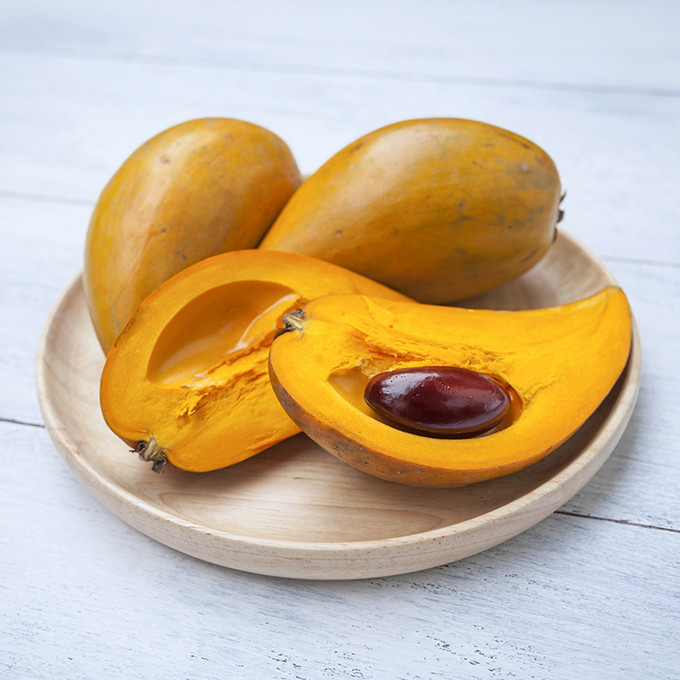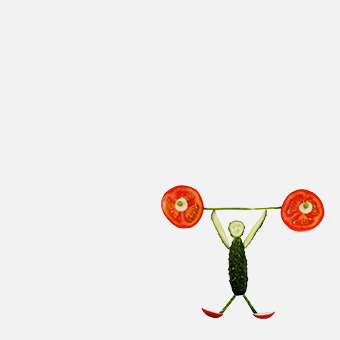“Superfood” has become the buzzword of the health industry, and simply describes a food that is rich in nutrients, and particularly beneficial to one’s well being. Many regular fruit, vegetables and seeds can be classed as super in their own way, but of course, there are some weird and wonderful superfoods out there too. Chia seeds, cacao and acai; they all started out as obscure ingredients, but now we see them quite often in health food stores, and even creeping into our everyday supermarkets too.
It’s true that the world of superfoods can be a bit mind-boggling. Remember the time when you were calling quinoa “quin-oh-ah”, blissfully unaware you were making a grave mistake? We thought we would give you a head’s up on what’s to come in superfoods, so you can swot up early and be a pro by the time we’re all eating and pronouncing them. Here’s nine to get your tongues and taste buds around:
1. Kefir (kuh-feer)
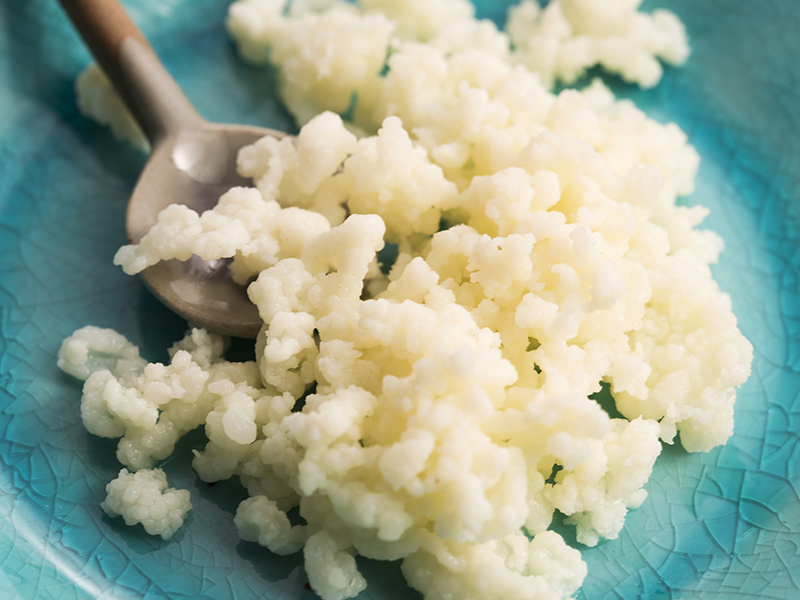
Kefir is a fermented milk product and is made by adding kefir into any type of milk, including cow, goat, sheep, coconut, rice or soy. These grains have a gel-like texture, and it takes 24 hours for the grains’ micro-organisms to multiply, ferment the sugars in the milk and turn it into what is known as kefir. These grains (pictured) can then be removed from the milk and used again to make more. Because they can be added to any type of milk, kefir can be consumed by non-dairy and lactose-intolerant people too. It might all sound a bit science-y, but it’s with good reason. Kefir can be eaten in a similar way to a yoghurt drink, but is far more beneficial. Despite being very tart in a taste comparison, kefir, like all fermented foods, which help to keep your digestive system in good working order, and has high levels of calcium and phosphorus, both of which strengthen teeth and bones. With all these benefits, as well as various other nutrients, it seems fitting that this superfood gets its name from the Turkish word meaning “feeling good after eating”.
2. Lucuma (Loo-cu-ma)
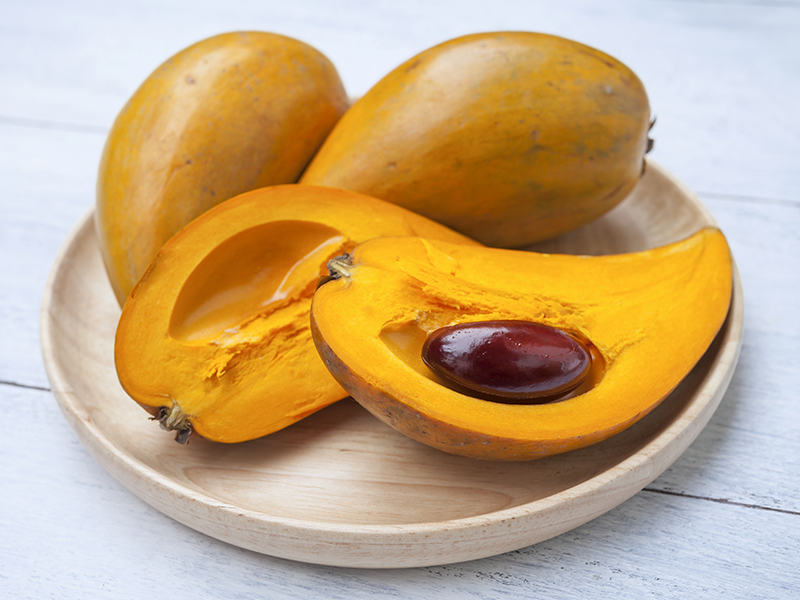
Native to Peru, Chile and Ecuador, the lucuma fruit is also known as an “eggfruit” because of the texture of its yellow flesh, which is oddly similar to that of a hard-boiled egg yolk. That may not tempt you to try it, but know that the flavour of this flesh has been likened to a cross between maple syrup and sweet potato. Due to the not-so-desirable texture, only hardcore fans tend to eat the fruit raw. Most people instead prefer to add lucuma into smoothie or baking blends, usually in a powder form (the Peruvians even make ice cream from it). As for the benefits, lucuma and its oil have great healing characteristics for the skin and help to aid good digestion too. It’s low on the glycemic scale making it a good sweet choice for diabetics, supporting normal blood sugar levels and blood pressure issues.
3. Freekeh (Free-kah)
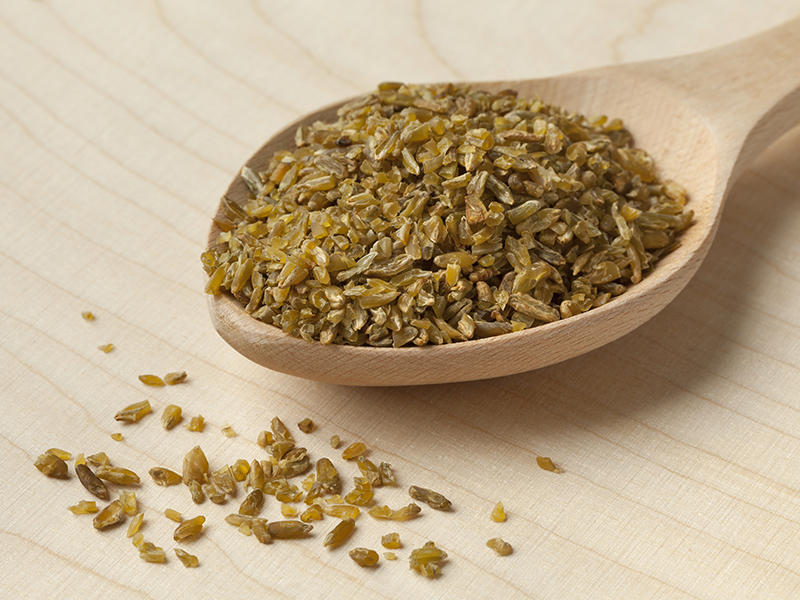
Sit down, quinoa. The brand new supergrain for 2016 is here, and it’s freekeh. According to legend, 2,000 years ago somewhere in the Middle East, a field of young wheat accidently caught on fire, but harvesters found that after they rubbed down the outer, charred coating, the grain inside was still perfectly edible and left with a nice smoky flavour ( hence why “freekeh” literally means “to rub” in Arabic). This smokiness has been replicated in the production of freekeh ever since, although, of course, not in such drastic measures! It is low in fat, has three times as much protein as brown rice and double the amount of fibre as quinoa. It is also high in iron, calcium and zinc. Freekeh is incredibly versatile, and the nutty taste means it can be eaten hot or cold, and in both sweet and savoury dishes.
4. Teff
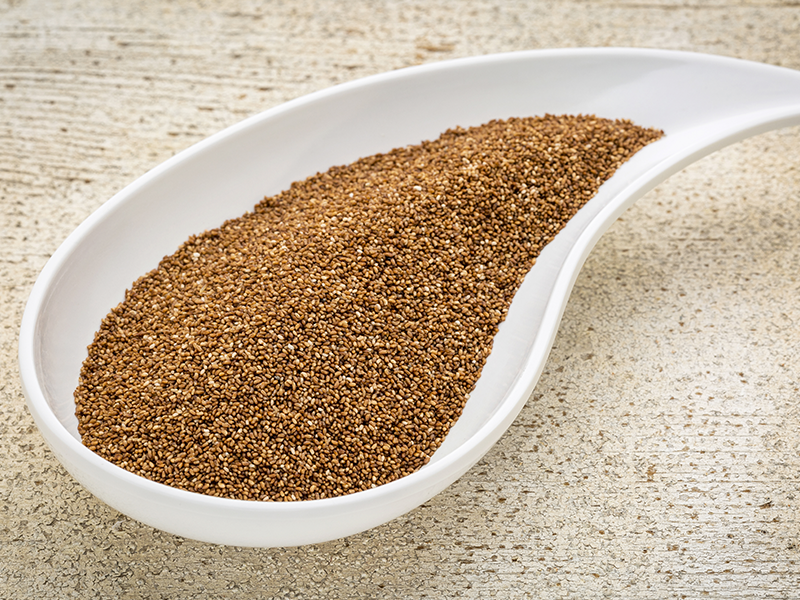
Teff is a very tiny grain, more like a grass, originating in Ethiopia. Injera, the spongy-textured flatbread, is the national dish of Ethiopia, and is made from teff, served often with stews and salads. It’s suitable for a gluten-free diet, and is used in the health food market as a substitute to normal flour. Bread, porridge, polenta, cake, biscuits: all can be teff-ed up. Teff has more calcium than any other grain, and also has a type of fibre which can benefit blood sugar management, weight control and colon health too. That’s a lot of nutritional goodness for a grass that contains three thousand grains in every gram – small, but oh so very mighty.
5. Lupin beans

Also known as lupini, these beans are a traditional food from Latin America. A member of the legume family (that’s the “health” way of saying beans and pulses), they’re very popular in vegan diets as they contain 36g of protein per 100g (compared to kidney beans which have 7g, or butter beans which have 8g). They’re also high in fibre to fill you up, and low in carbohydrate. In South America they are traditionally pickled and eaten as a snack, which consists of making a small tear in the skin with your teeth and popping them. However, the skins are edible too, if preferred. Lupin beans can also be ground down and, like teff, used as a gluten-free flour, or flaked. But all this goodness could come with a price; if prepared incorrectly, lupin beans can be highly poisonous. So, before you start preparing them yourself, make sure you know your stuff!
6. Bentonite Clay
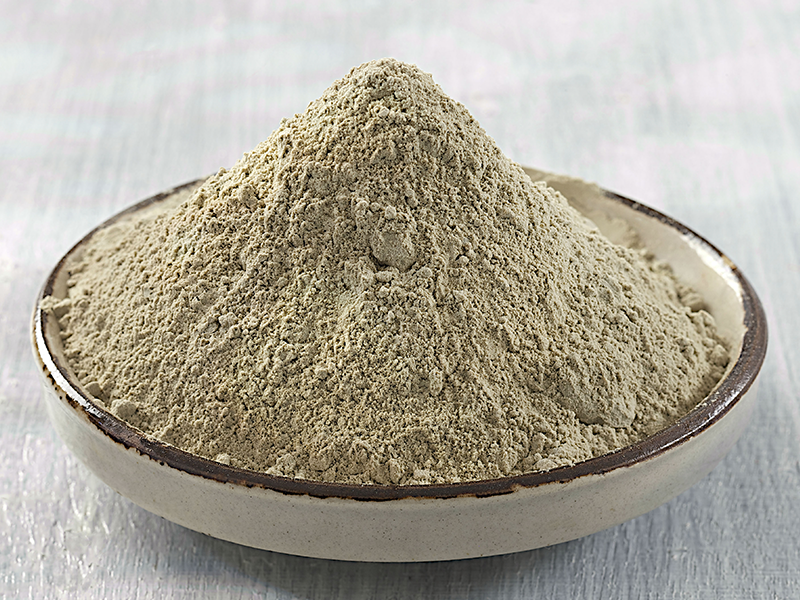
Now you may be thinking, “I know what clay is, but why is it on a superfood list?” Well, as well as benefiting the body externally, bentonite clay is proving to have great impact on your health when ingested too. Made from volcano ash from Wyoming, bentonite clay expels toxins from your body, increasing immunity and reducing inflammation. It also alkalizes your system, helping to relieve all digestive problems too. To ingest the clay by mouth, the easiest method is to mix half to one teaspoon into water (you’ll want a lid on it, so you can shake it up well and make sure it has really all dissolved). Drink this once a day, or alternatively, gargle with it. If drinking clay isn’t really your cup of tea, adding the clay to your bath, or applying it wet to your body as a wash or mask will benefit your skin, helping with the healing of scrapes, spots, blemishes or scars.
7. Gubinge (Gub-in)
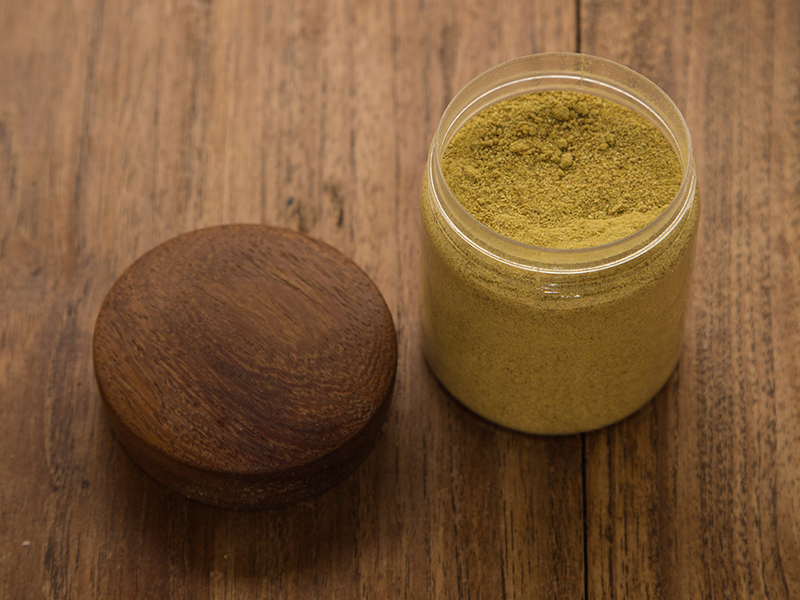
Don’t worry. It took us several attempts to look up the pronunciation of this one, and we’re still not 100 per cent sure either. Nevertheless, the Australian gubinge fruit is pretty super as far as superfoods go, and is apparently the highest natural source of vitamin C on the planet. In 100g, it has over 50 times more vitamin C than found in oranges, but why is it important that we get a good source of this nutrient into our diets? Vitamin C can protect against cardiovascular disease, prenatal problems, eye disease, and build a strong immune system – it can even help with skin ageing and prevent wrinkling. However, this superfruit is only harvested in remote areas of Oz, making it currently very difficult to get hold of, and expensive when you do (around $40 for just 50g of ground gubinge powder). Still, you may see it entering the health food and beauty market over this next year.
8. Baobab (Bey-oh-bab)
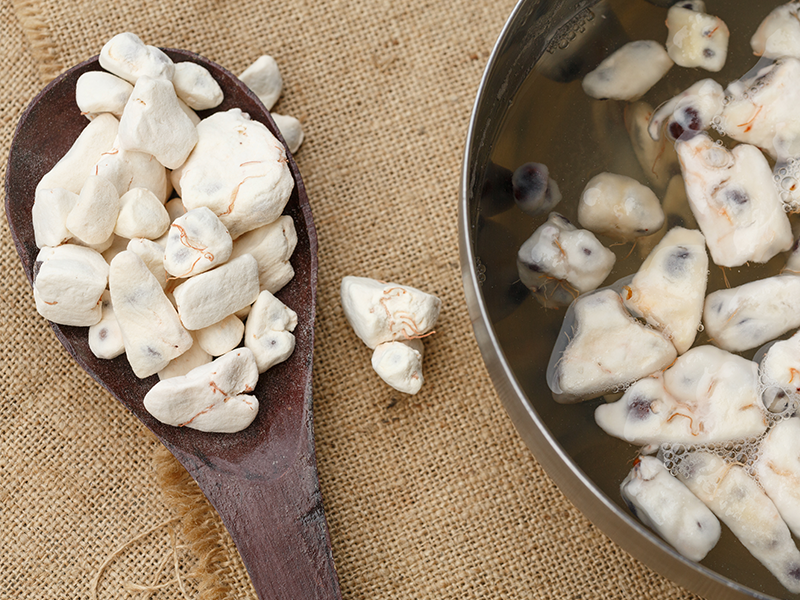
Over to Africa now, and to a fruit that contains more iron than steak, more calcium than milk and more antioxidants than blueberries. The mighty baobab is quite an ugly-looking fruit, both inside and out. The white powdery flesh, which resemble mismatch pieces of chalk, has the texture of, well, chalk, and is naturally dehydrated, which is the reason why it retains all of its nutrients so well. But it does have a tangy, citrus taste, which makes it a great addition to sweet recipes like smoothies, baked goods, and baobab jam is also very popular. You’ll already be able to find it on some supermarket shelves, usually as an extract in juices, or snuck into a dessert, but with all those health benefits, it’s bound to be around a lot more in 2016.
9. Sacha Inchi (Sa-cha In-chi)
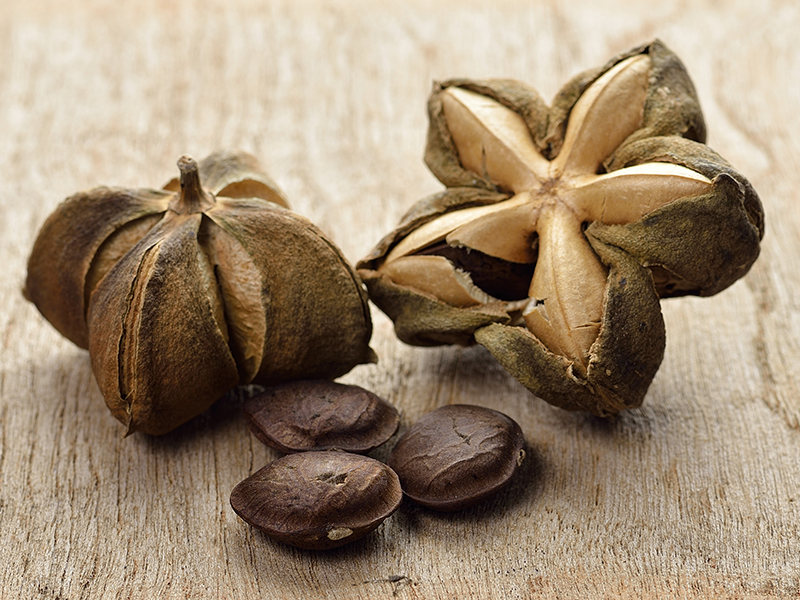
Here’s a far prettier superfood on the list, also known as the Inca-peanut. Sacha Inchi looks like a rather large star anise, but inside each segment hides a seed with great nutritional benefits. The oil within the sacha inchi seed contains the highest amount of omegas 3,6 and 9 that you’re likely to find in any food source, which together help to produce healthy looking skin, hair and nails, improves vision, and, like all omega fatty acids, aid immune, bone, joint and cardiovascular health. They can be eaten in a similar way to nuts, roasted, salted and enjoyed on their own, or alternatively they can be ground down and added into many other recipes.
Now you’ve got those nine under your belt, you’ll also be pleased to know that there are some other superfoods making the headlines, and you’ve already heard of them. It turns out that Brussels sprouts aren’t just for Christmas, and as well as all the nutrients they include, we will be eating them this year because of their glucosinolate-content, which helps protect against DNA damage. Joining spinach and kale in the superfood green vegetable bracket, seaweed and kelp will be making a big splash, as well as black rice, banana flour, bone broth and super waters like cactus, birch and maple.

